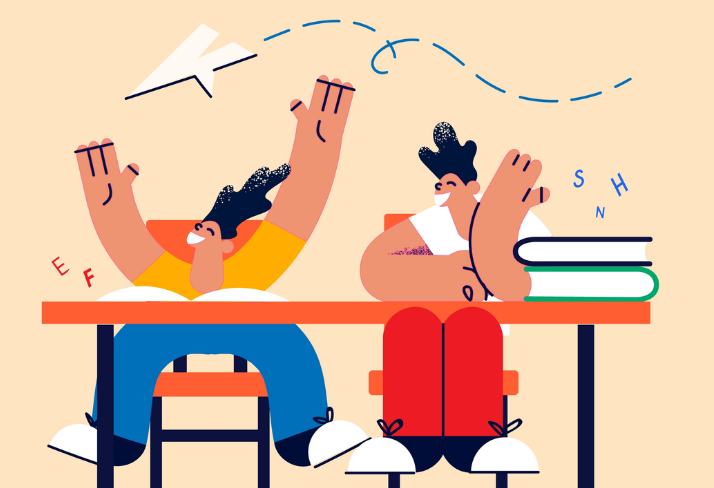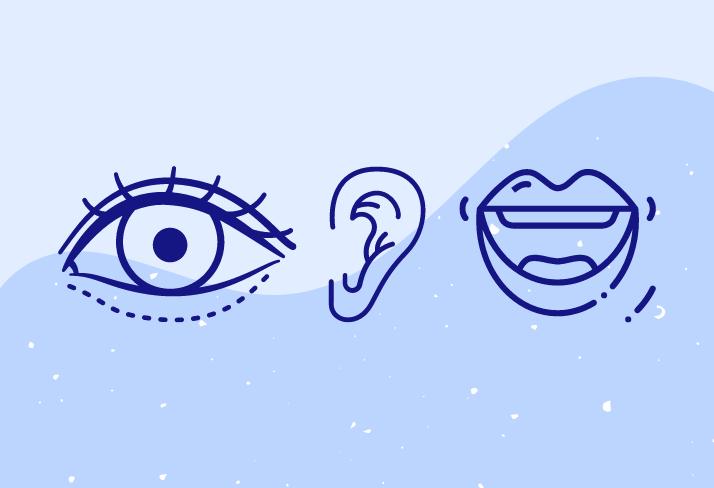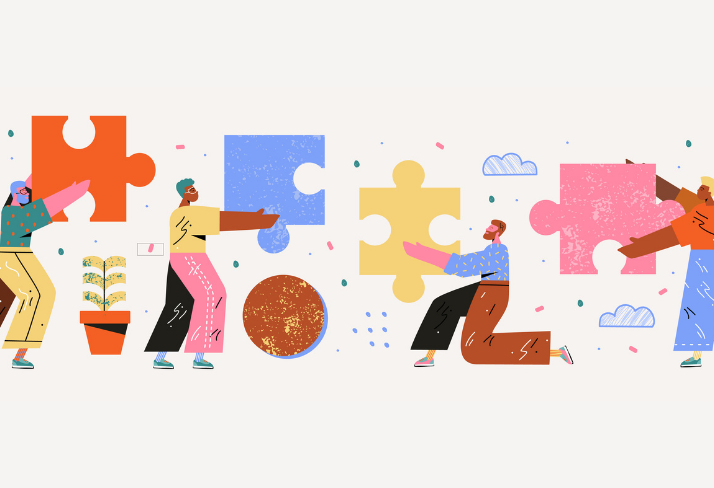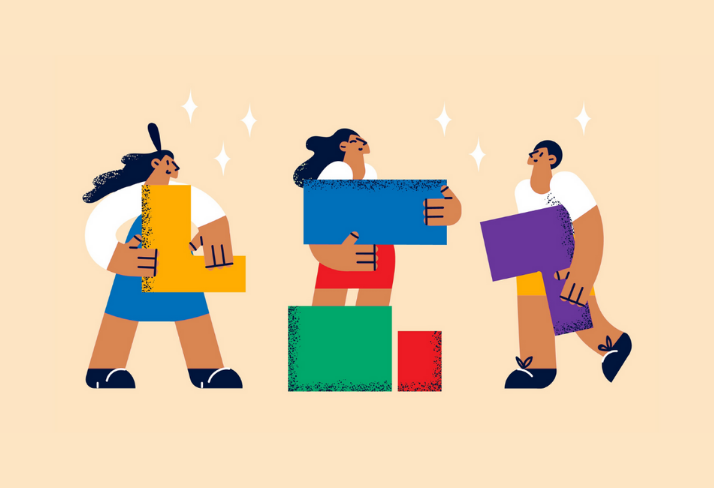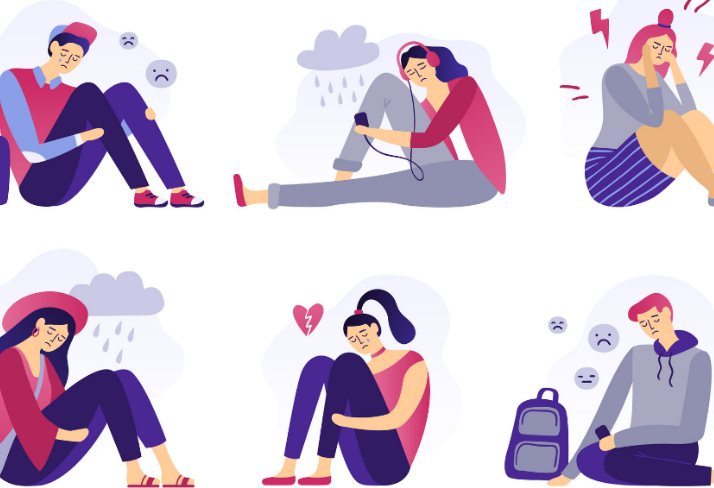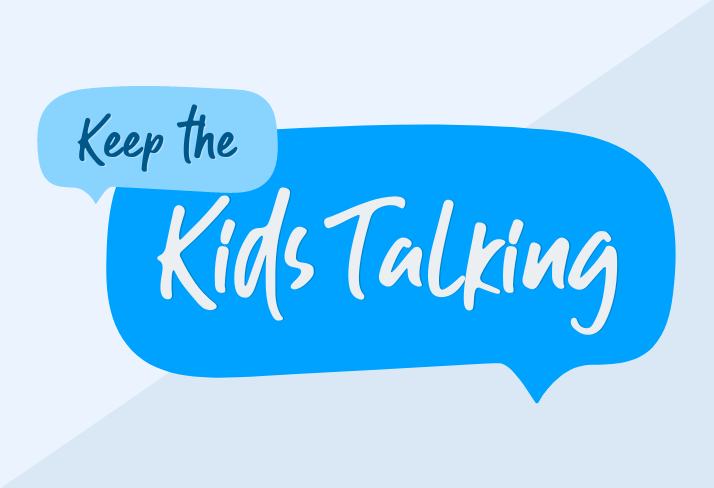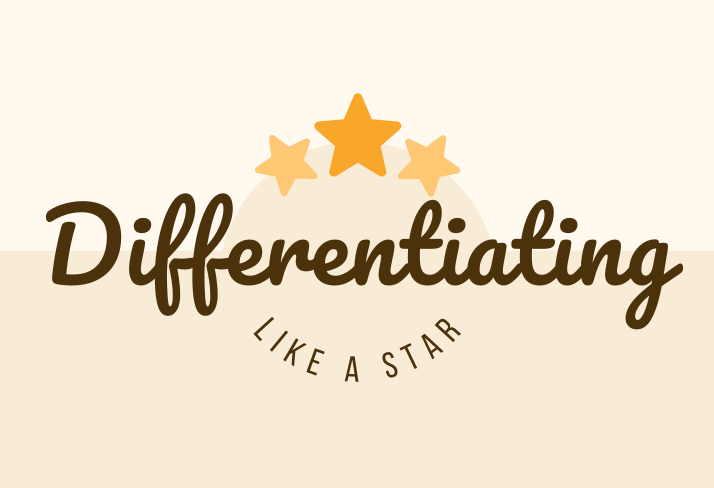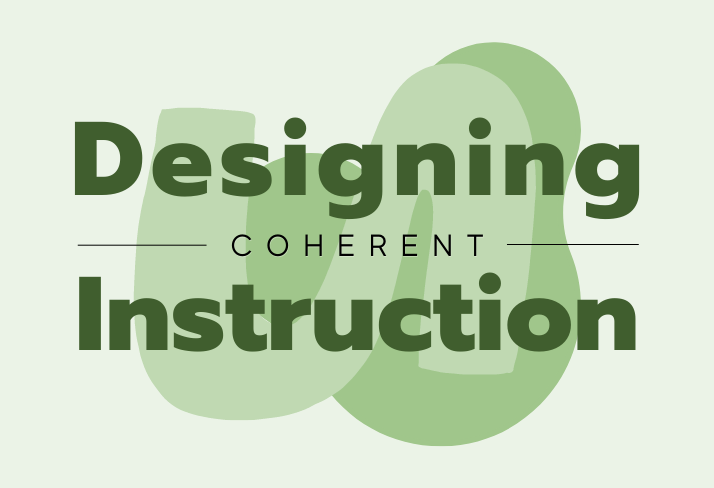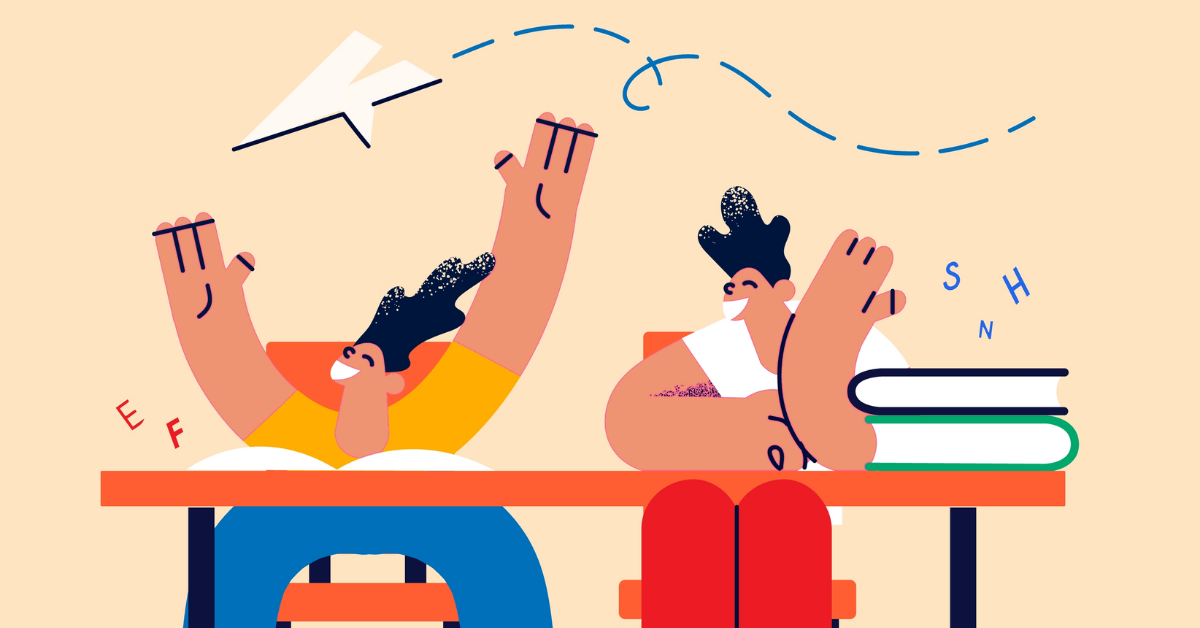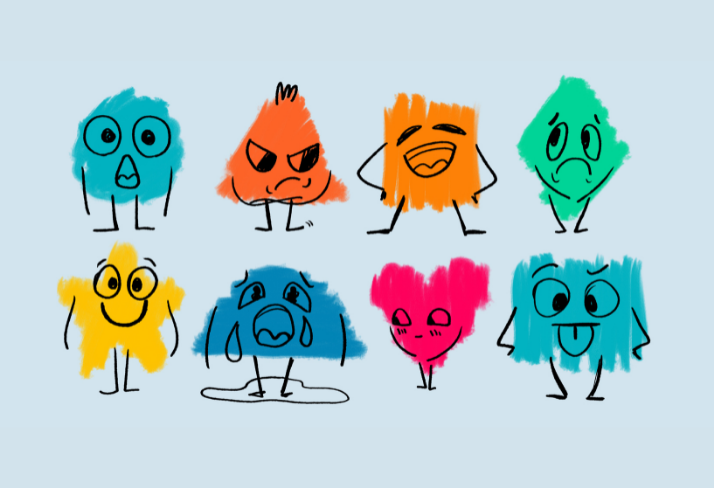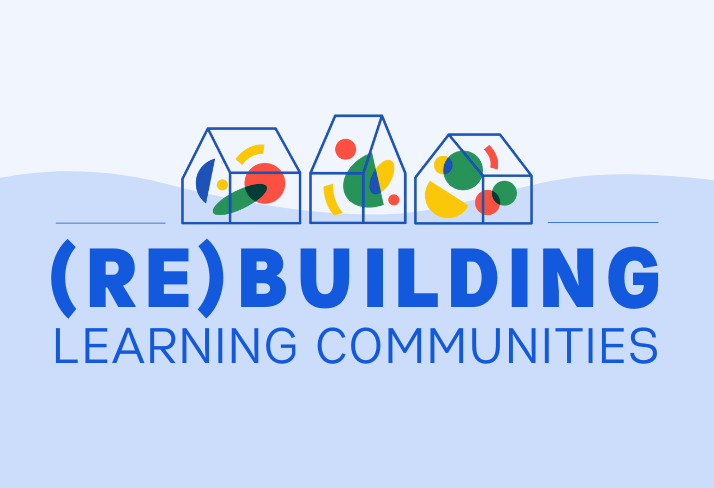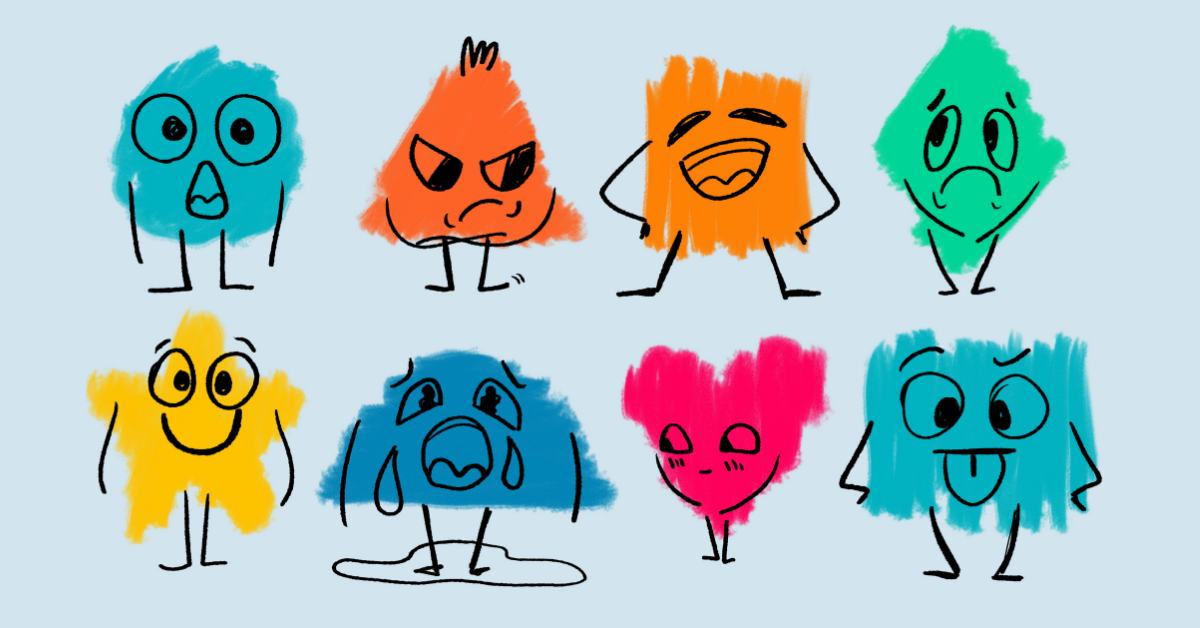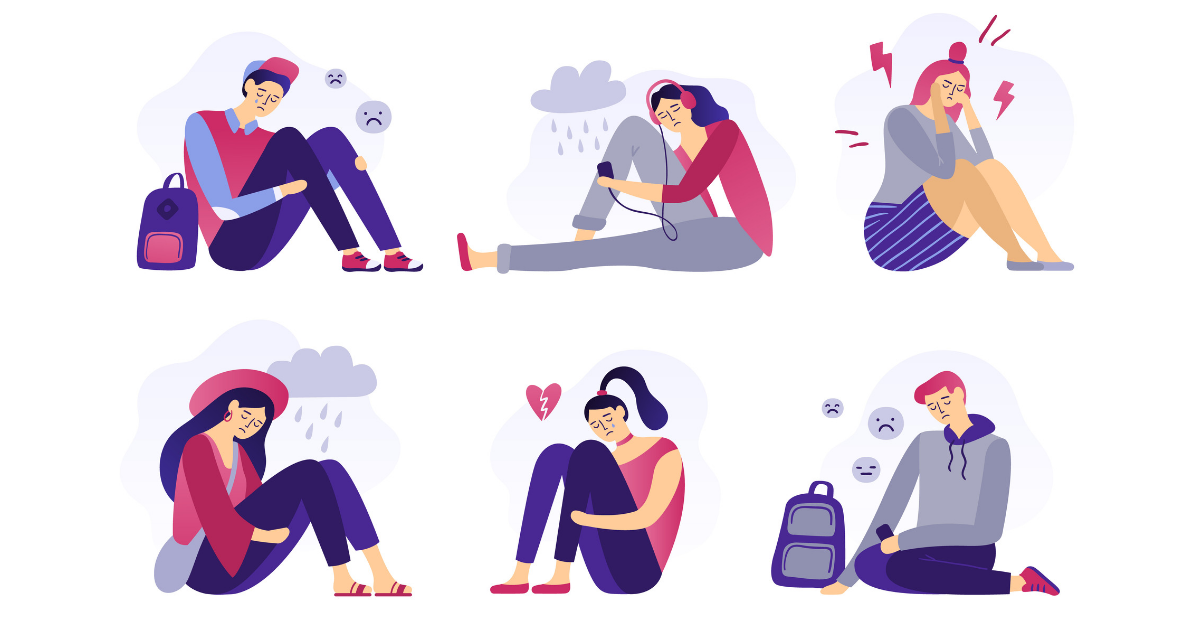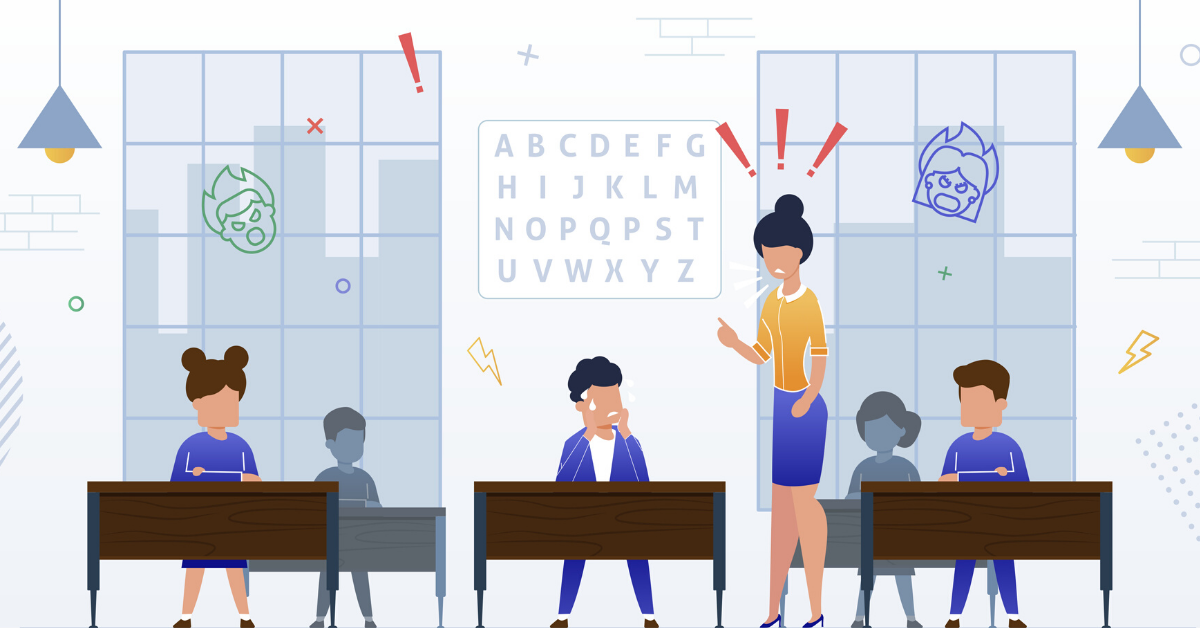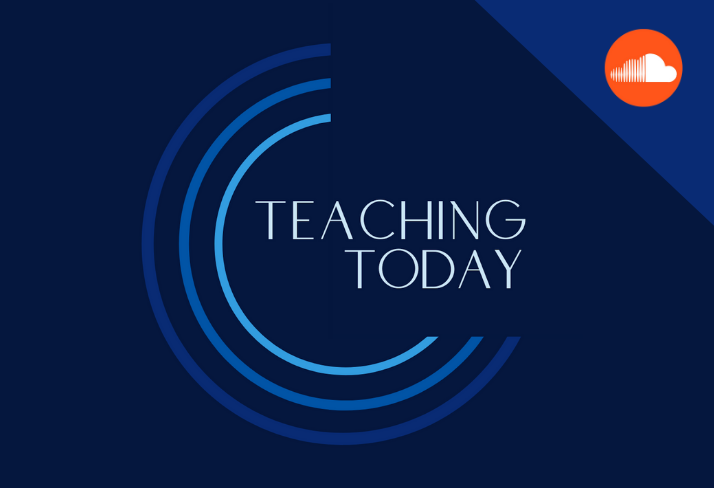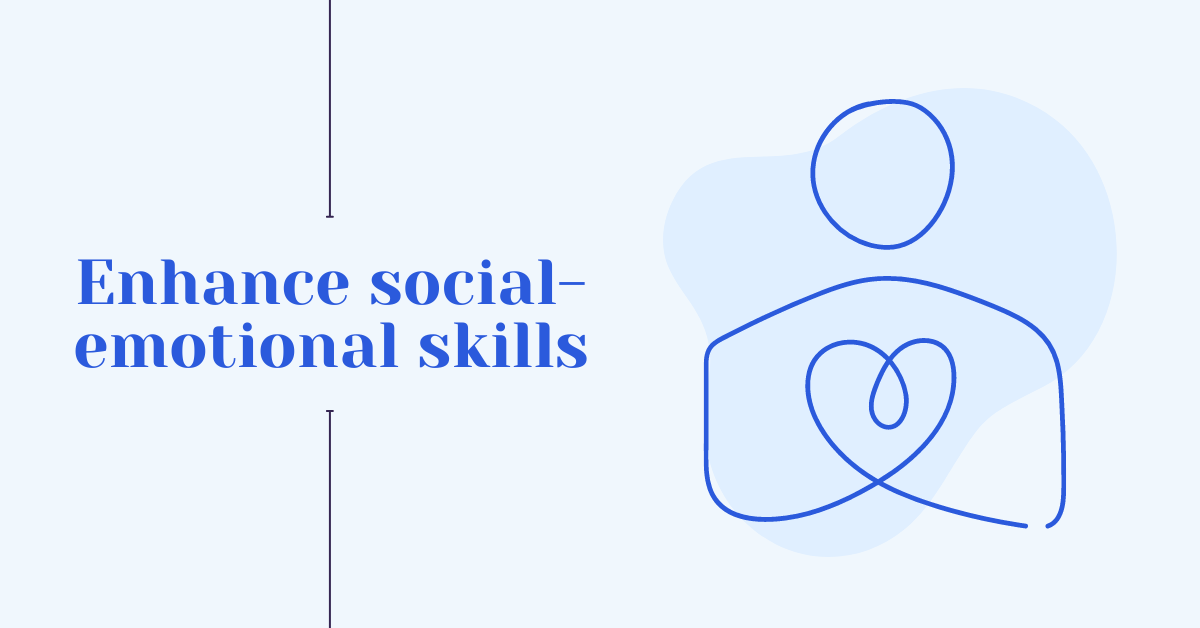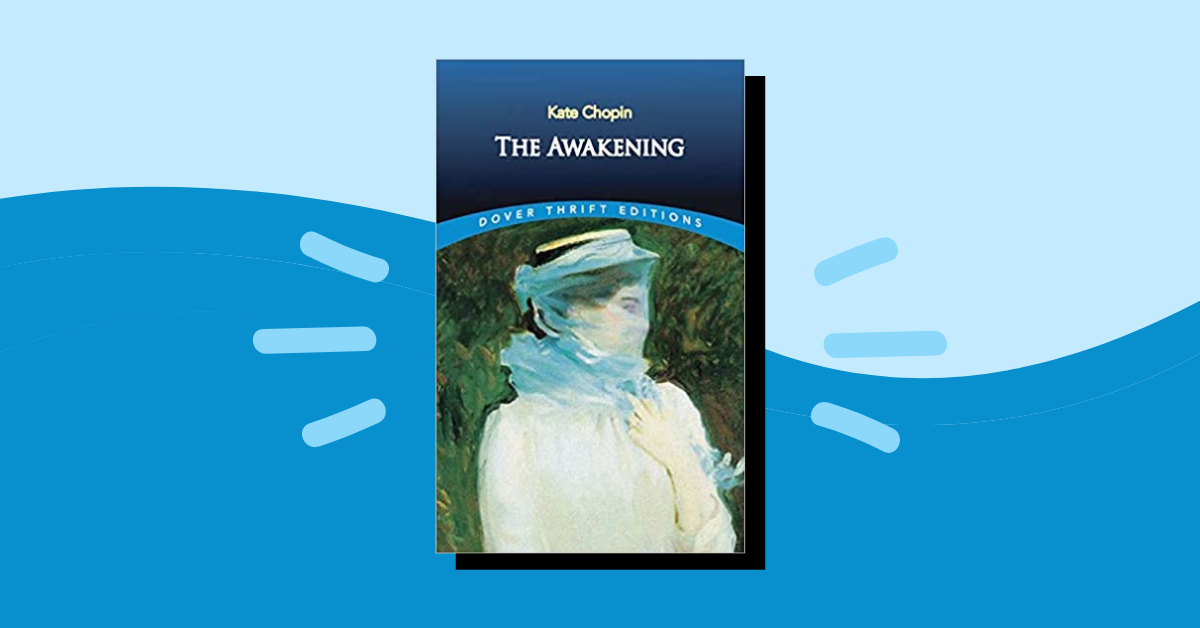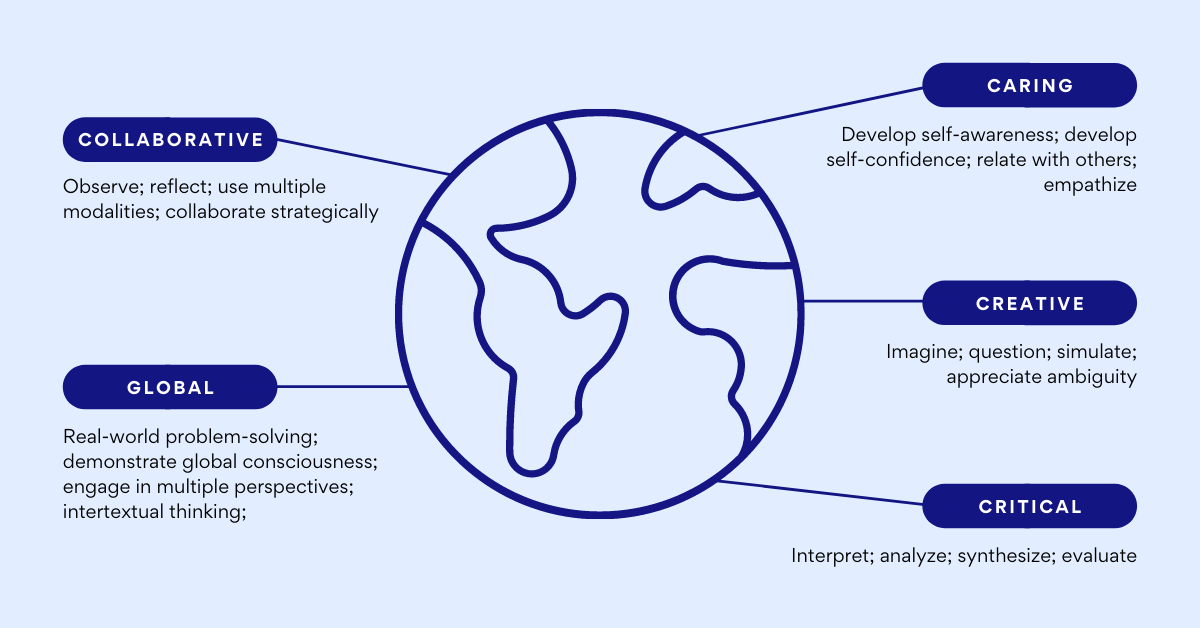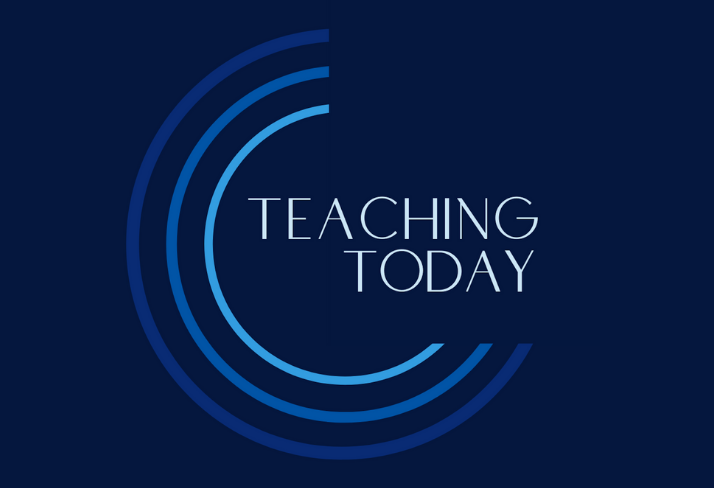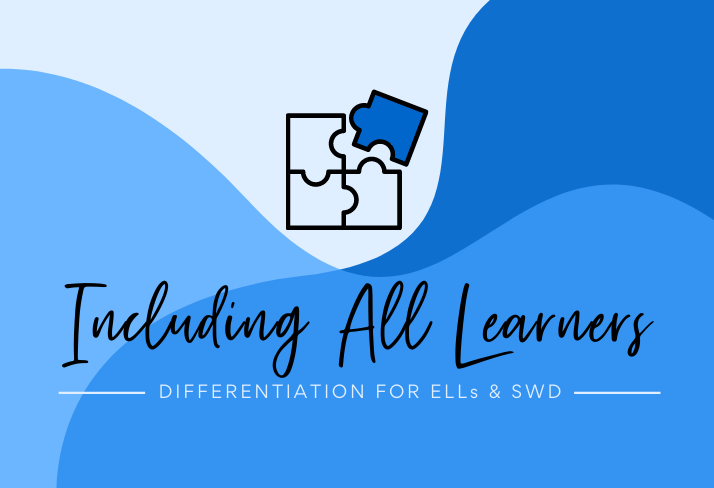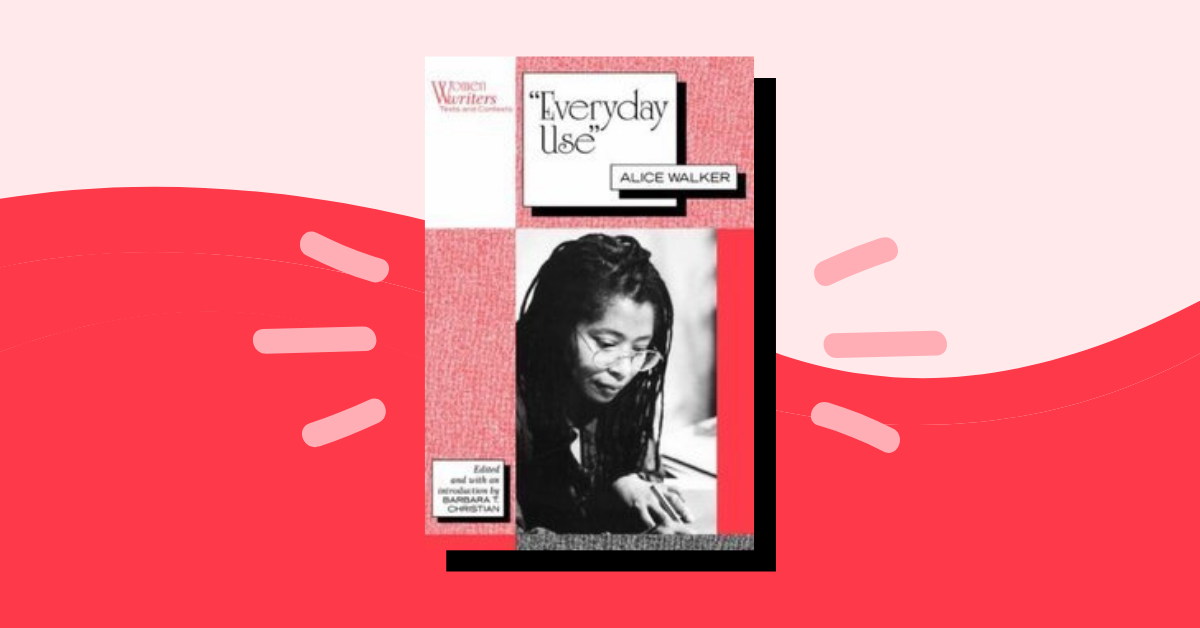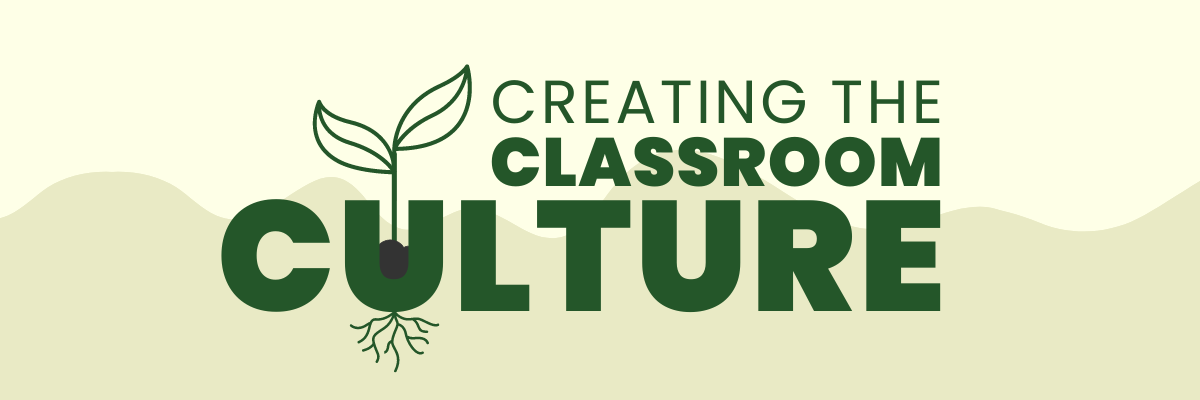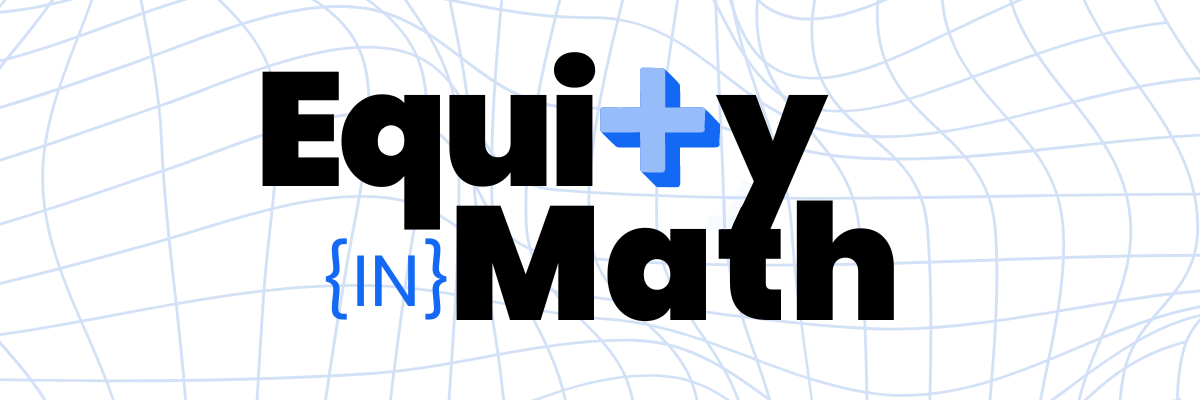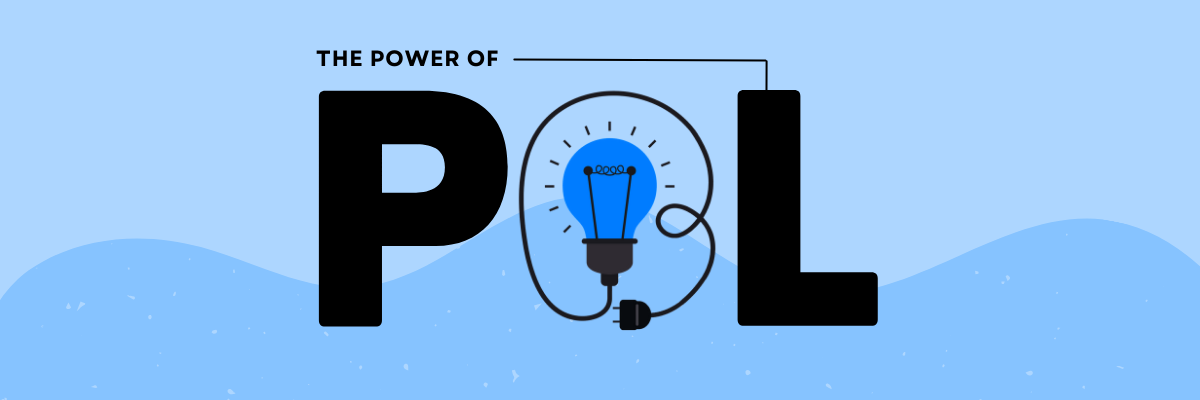|
Encourage students to expand their repertoire of ways to read and respond to literature.
As someone who loves to read and write, one of my favorite things to do is annotate texts — whether it be a few scrawled words in the margins of my most beloved hardcover books or endless questions written on sticky notes falling out of flailing paperbacks, my annotations capture the spirit of my hyper-personal engagement with a text.
When I became an English teacher, I knew that I wanted my students to learn how to annotate, in part because I wanted them to capture their noticings and wonderings as they engaged in their own distinctive reading process. In “Literature as Exploration” (1995), Louise Rosenblatt wrote that every person has a unique, transactional experience when they read a text, in which they “live through” something special. I think of annotations like mementos of this special reading experience because they capture a moment in time in the transactional experience that would otherwise be lost. Every time we read a text, even if it’s one that we’ve read hundreds of times before, we encounter a new transactional experience. As we annotate and re-annotate texts, we leave behind a trail of our reading experiences: our questions, thoughts, and wonderings. I desperately wanted my students to develop that experiential, transactional trail of their reading processes.
The Traveling Text
Imagine my surprise when I discovered, as a new teacher, that my students often responded to my call for annotations with, “I don’t know how to annotate!” or “Can you tell me what to annotate for?” or, worst of all, “I hate annotating. It’s a waste of time.” I can recall my naive shock when I heard my students respond in this way. In a desperate attempt to show my students the value of annotating, I began tirelessly modeling annotation strategies and my own methods of annotation, but doing so yielded little success. With time, I developed an incredibly simple strategy for teaching my students to annotate. Essentially, I stopped teaching my students to annotate through direct instruction and, instead, encouraged them to teach one another. This instructional strategy was, in my teaching, a solution to the problem of students feeling like they “don’t know” how to annotate or that annotating has “no purpose.” I call this strategy The Traveling Text (download here). The Traveling Text is simple, requires minimal teacher preparation, empowers students, builds community, and teaches annotation skills. And implementing this strategy with your students only takes four steps.
The impact of The Traveling Text
In my teaching experience, here are some of the impacts of this strategy on my students and our classroom community:
Teaching students to read for meaning (and for pleasure) is a daunting task. Often, our students come to us already feeling like they don’t know how to read and annotate literary texts in the “correct” way, one that highlights what a teacher or evaluator might be looking for.
The Traveling Text creates possibilities for students to expand their own repertoire of ways to closely read and respond to literature. But, even more importantly, the strategy encourages students to experience a sense of intellectual community and belonging with their classmates as they share with one another written artifacts of their own transactional reading experiences.
Subtle ways to help redirect your students.
I recently met with a colleague who had just returned from visiting a science teacher’s classroom, and when I asked her about her visit, she replied, “I love being in his classroom. I mean, he’s such a natural teacher.” I nodded, because I know just what she means. In this particular teacher’s classroom, the students produce thoughtful work and always seem engaged, even cheerful, which is no small feat for high schoolers. He has a gentle, relaxed way about him and when students start to act a little silly or get off task, he swiftly ushers them to their seat or nudges them to refocus.
I kept thinking about that phrase “he’s such a natural,” and what it means to be a “natural” at teaching. Or anything, really. I thought about the teachers I’ve worked with whom I consider to be “naturals,” and how they seem to teach effortlessly, how they bring humor into the classroom and make students feel safe and welcome so they can focus on learning and engaging with the content. Professor and mentor Ruth Vinz always pushes educators to name the verbs we use in teaching. In other words, what does it mean to “teach?” In this case, what are those moves this “natural” teacher makes to keep his class running smoothly, so class time is spent on learning?
Non-confrontational strategies
Our classroom management resource can help you encourage students in your class who may need some redirecting, and proactively stop flare-ups before they start. The goal is to maximize class time with your students, and this resource may provide fresh ideas. As you look at the list, notice which strategies you are already doing and which you can try. Below are some non-confrontational strategies from this resource that I use all the time. Please note: if anyone in class is in danger of hurting themselves or others, the teacher needs to reach out for help immediately.
Acknowledgement
To the class aloud, “I want to say thank you to x, y and z for working quietly on their assignment.” Or “Everyone is working so well, keep up the good work!” This strategy notices and names students who are on task, or working towards the right direction. Naming students who are doing the “right thing” is a great teacher trick, as it allows students to hear their name in a positive way. This acknowledgement can even sound like, “I love how you are partnering together and sharing your ideas,” as this feedback names the specific ways students are working in your class. When teachers use positive narration, they are creating a positive cycle that other students will want to engage in.
Proximity
Teacher stands close to students who are talking or disruptive. The teacher continues to stand there until the students have stopped their disruptions. This is such a classic teacher move that so many of us practice without even knowing it! When a student begins to get a bit distracted, walking over to the student and standing near their seat is often enough of a gesture to refocus the distracted student, instead of elevating the situation by saying their name in a disciplinary way. Along this same trajectory, it often helps to walk farther away from students who are speaking too softly for classmates to hear. Students tend to speak loud enough for their teacher to hear, but if the teacher is moving to the far side of the classroom, they will have to raise their voice to become more understandable. This is another non-confrontational way of nudging students to project their voices instead of asking students to “speak louder.”
Waiting
Teacher is speaking to the class when talking begins. The teacher freezes mid-sentence — doesn’t speak or move — and doesn’t speak again until the room is quiet. We can all remember that teacher who could silence a class with just a look. Perhaps by widening their eyes, or a slight tilt of their head. Before you knew it, students were shushing each other and sitting up a bit straighter. While there may be a touch of teacher magic happening in these scenarios, the “Wait” strategy is an effective way to redirect your class without raising your voice! Sometimes it takes a minute for students to get quiet. This strategy is a reminder that teachers don’t have to talk louder or speak over students; on the contrary, it is more powerful to pause and wait for class to quiet down. It’s also a good reminder that sometimes silence or “wait time” in the classroom is necessary — particularly during discussions or after the teacher or a student poses a question.
There are some teachers who may appear as “naturals” in the classroom, but if you start to notice and name their teaching moves, you will find that they are practicing non-confrontational strategies with their students. These small moves are ones that all of us can employ, and with some consistency and a bit of teacher swagger, perhaps we can all be “naturals” as well.
Help students independently investigate and interpret unfamiliar words using context clues.
When it comes to reading, one of the most significant challenges students face is vocabulary. If students come across a word they don’t know while reading, it can have a substantial impact on their comprehension and their confidence. I witnessed this as a classroom teacher, and I’ve heard it from many of the teachers I now coach.
Searching for clues
One of my most tried and true strategies, which I used in my own classroom as an elementary teacher, and one I continue to offer to teachers, involves encouraging students to read texts like a detective who is searching for clues. Asking them to engage in this way encourages students to look for clues that can help unlock meaning, offer insights, and assist them in interpreting unknown words. But these clues — often referred to as context clues — go beyond the language immediately surrounding unknown words. Clues might be found in the paragraph before or after an unknown word or phrase. Sometimes there are clues in the text features, including pictures, visuals, captions, or word boxes. We need to support students in treating the whole text as a series of clues that can help them become familiar with specific vocabulary words as they read independently.
Monitoring for meaning
Our Monitoring for Meaning resource can support students with this process, particularly when it comes to identifying and investigating difficult words. It offers a helpful template that prompts students to:
This resource asks them to use their best guess and then either confirm or revise their thinking after using a dictionary. Furthermore, it prompts students to lean on their prior knowledge to help decipher new words.
Literacy teachers have the demanding and important task of teaching reading, and while there is no single strategy that can guarantee success, encouraging curiosity and investigation while reading is a high leverage way to support students in becoming competent, confident readers.
A flexible path toward mastery that provides structured support for students at all levels.
When I was growing up, my high school Social Studies teacher had a poster hanging on the wall that read, “If you think you can, or you think you can’t, you’re right.” The message was clear, even to teenagers -- the power to succeed or to reach a new goal is often inside of each of us. As educators, we know that our students’ mindsets play a major role in how hard they try, how much confidence they develop, and how committed they are to reaching their goals. But confidence alone doesn’t get them to a point of mastery. And desire alone won’t develop their skills, or increase their knowledge base, or level up their accuracy or precision. For those changes, our students need structured support!
This structured support often comes in the form of scaffolding. Like the large platforms that help construction workers reach the tall exterior of a building, scaffolding student learning creates platforms of support as teachers incorporate challenging texts, complex tasks, and abstract ideas into their instruction. Scaffolding is critical when holding high expectations and implementing a rigorous curriculum — but scaffolding alone doesn’t develop independent learners. Sometimes, scaffolding can become a crutch that teachers and students use, turning a support into a shackle. As educators, we often spend a lot of our planning time thinking about how to build scaffolds to break learning down into manageable components, but we can’t stop there. We must also consider the ways we gradually release scaffolding so that students can internalize and transfer their knowledge and skills to new tasks and topics.
A path toward mastery
Our Progressive Scaffolding Framework outlines a path for educators to consider when setting high expectations for students, helping them find that balance between necessary supports and structured enabling. Building on the ideas of Zone of Proximal Development and apprenticeship theories, the framework outlines a path toward mastery in four stages:
Stage 1: I do, you watch
When introducing new content or skills, we begin with the I do, you watch stage. We initiate this by introducing new concepts alongside prior knowledge, real world examples, or previous units of study. Our goal is to map new information onto our students’ activated schemas so that the new content or skills are contextualized and relevant. At this stage of instruction, we can prepare and provide a model of the task, using a Think Aloud mini-lesson where we walk our students through an internal thinking process that illustrates how we navigate the task and make decisions. Alternatively, we can outline the explicit steps to complete the task, or provide a roundup of the important information students need to know before diving in. The I do, you watch process can be presented to students working individually or in small groups. It’s important to remember that even at this stage, students shouldn’t be sitting silently. We always want students actively engaged, so we might add a note taking component, a reflection task, a meta-cognitive class discussion, or an element of inquiry so that students remain intellectually engaged in the process.
Stage 2: I do, you help
After laying the groundwork for the task in stage 1, we can move into stage 2, where students begin working with the content and task materials with support. Working in small groups, students might replicate the model with new information, restate or reword the essential steps in their own words, or engage in a small group discussion or group practice as a way to begin experimenting with and internalizing the skills.
Stage 3: You do, I help
In stage 3, the content and skills should be familiar to students after their initial explorations, and they should be ready to continue in pairs or small groups with more independence. Students are still in the development phase of their learning, so they may need additional support and will benefit from frequent check-ins, and suggested strategies — but here’s where we want to avoid returning to stage 1 supports. We’re looking for students to be engaged in a productive struggle. Students may benefit from suggestions of “fix up” strategies or options for what to do if they get stuck. At this stage, we want to push students beyond replicating the model or the example by having them practice the skill or apply content with a new format, a new context, or by making connections to other topics within the discipline or beyond. This is also a great stage to ask students to use one another as resources. While working in pairs and small groups is an excellent way to support students at their level and create opportunities for growth through collaboration, we want to ensure a high level of individual accountability so that some students don’t take on the burden for the group while others opt out of the learning process.
Stage 4: You do, I watch
In stage 4, students have been exposed to new content and skills, they’ve practiced working on a task informally with support, and they’ve begun making connections with other content information or demonstrating their learning through class activities and tasks. At this stage, it’s important to begin removing any unnecessary scaffolds to see what students can do independently. In the You do, I watch phase, we recommend providing a short review of the process and previous work done up to this point in the learning experience. After the review, we can be clear with students that they’re ready to try it out on their own. Provide a clear task and an adequate amount of time to complete the task (3-4 times as long as it would take you to do it). Students who are able to take on this challenge and demonstrate their skills individually prove that they’re meeting the expectations of the task and are ready to move forward to the next knowledge block or skill sets. Students who struggle at this stage help us to understand where and why they’re struggling, so that we can return to Stage 3 to provide targeted support.
How long does this take?
Like an accordion, this process can be expanded or compressed to meet the needs of your grade level and subject area. We might be able to move through the four stages within a single lesson, or it may be an expanded process that is organized across a week’s worth of lesson plans. Consider these two examples:
45-minute Lesson Plan Structure
5 minutes | Opening warm up: Inquiry question 10 minutes | I do, you watch: Mini-lesson modeling 10 minutes | I do, you help: Stop and jot, turn and talk reflection on the model 15 minutes | You do, I help: Small group practice 5 minutes | You do, I watch: Closing summary formative assessment
Week-long Lesson Structure
Monday | I do, you watch: Introduction, modeling, and reflection Tuesday | I do, you help: Small group discussion and practice Wednesday | You do, I help: Small group practice and connections, part 1 Thursday | You do, I help: Small group practice and connections, part 2 Friday | You do, I watch: Independent practice and formative assessment
The process of instruction and assessment is complex, especially when we’re trying to use data to inform instruction and support students who’ve struggled in the past. We want to be mindful to keep forward momentum toward rigorous learning goals while developing a clear path forward for students who begin at every level.
6/7/2022 Lessons from the Field: Practice and Professional Learning with the Global Mindset Framework
Making a 21st century skills framework meaningful for K-12 instruction.
Over the past century, advanced technology has made the world smaller and smaller. This has perhaps never been truer than the past decade, in which social media has made it possible for a tweet or an Instagram post to be seen around the world in mere seconds. Consequently, we see and have many more collective experiences. This was perhaps never more evident than over the past few years with the shared experience of a global pandemic and a rapid impact on learning in most parts of the world.
As we were thrust into new ways of thinking about teaching and learning, different mindsets, and different ways of imagining schools, we were faced with the truth that we can no longer sustain a 20th century in a 21st century world. The task before us is to educate students today for the world they’re poised to lead tomorrow. As a founding organization of the Global Learning Alliance (GLA), we have been thinking about reimagining education and preparing educators for the future for quite some time. The GLA is the outgrowth of our groundbreaking research in five of the top PISA-ranked cities around the world on the features and practices surrounding 21st century teaching and learning, and is committed to cross-cultural research collaborations as an effort to define a pedagogy that takes into account the dynamic needs of our changing world. Through this work, we are dedicated to understanding, defining, applying, and sharing the principles and practices of a world-class education within a wide range of educational contexts.
Essential mindsets
As part of research and collaborations with K-12 schools and university partners around the world, we have developed the Global Mindset Framework, which identifies five mindsets that have emerged as most relevant to the future success of today’s students. Each mindset includes four key skills that demonstrate the actions that can be seen when cultivating the mindset. But just having access to a framework doesn’t mean it’s automatically linked to classroom practices — and some of these mindsets haven’t been typically taught in schools. As a result, we always consider how we can help educators to analyze, apply, and adjust learning frameworks as they incorporate them into their everyday teaching practices.
Putting the framework into practice
The challenge with any educational framework is translating it into meaningful practice for the teachers and students it's intended to serve. We were privileged to partner with the Brunswick School to integrate 21st century practices into a wide range of courses across all grade levels. We customized our professional learning approach to maximize the time we had together so teachers could have meaningful conversations, practical applications, and space to reflect on their experiences for deeper learning. We used a blended approach to professional development that included customized, professional learning videos and synchronous 75-minute sessions to explore the meanings of each component and practical application for classroom practices.
Metacognitive reflection
As we worked across department teams, we wanted to model the mindsets of the framework, so with each new mindset that we studied, we created a customized video with the basic facts, and then planned for an interactive face-to-face session where teachers developed practical strategies after watching the video and discussed the impact of the framework on their classes. Some teachers noticed that incorporating a new mindset each month allowed them to expand their learning outcomes beyond simply “critical thinking skills” and that they were setting critical goals for collaboration through group work and discussion, as well as creativity where they used imaginative writing prompts to help students expand their thinking. This kind of integrated thinking helped the teachers test and tweak their learning strategies immediately. By creating heterogeneous groups in these sessions, we were also able to support cross-grade professional learning conversations that generated great ideas from different vantage points. Teachers from the upper grades were amazed at the different planning and pedagogical moves made by the teachers in the lower grades. Similarly, the teachers in the lower grades benefited from learning more about student expectations in the upper grades. These realizations created space for metacognitive reflection about their practice, and challenged some of the assumptions we all have when thinking about planning for our specific grade/content area. Like working with students, we know that placing adults in strategic and flexible groupings is a powerful lever for keeping learning fresh. During the culminating session about their learning, each teacher was given an opportunity to share a lesson, unit, or project they implemented or planned to implement by applying a single or multiple mindset from the framework. Their learning was evident through their sharing and evidenced in the artifacts from their student work. In one case, a teacher hoped to have students investigate COVID-19 using actual numbers and data to unpack the pandemic. After interpreting the data, they would design charts and graphs to share their findings, make predictions for the long-term impacts of COVID-19, and offer recommendations for next steps. Throughout the project, students would implicitly be asked to demonstrate the Global mindset from our framework, as they strove to solve real-world problems.
Lessons learned
When educators consider the implications of the Global Mindset Framework within their own curriculum, we’ve seen how they cultivate their own mindsets, in addition to making direct connections to new teaching practices. Our partners demonstrated that when we scratch the surface of 21st century skills, we see that there are not only many innovative practices, but many unanswered questions. Some of our big learning moments and new questions included the following:
In education, we often encounter frameworks — whether it’s a framework for literacy, a framework for evaluation, or a framework for instruction — that should translate into practice. This translation can be achieved through thoughtful and intentional professional development that respects the knowledge of teachers and honors the ways adults learn. By structuring these professional learning sessions in both synchronous and asynchronous engagements, and using cross-content and grade-level groupings, teachers were able to interpret this essential framework in meaningful ways.
Wondering what this work could look like in your community? Reach out to us to discuss how you can bring essential 21st century skills to your students and community. 6/6/2022 Creating Transformational Change: Structures for Designing a Professional Development Series
A suggested sequence of sessions that encourages learning, application, reflection, and the sharing of promising practices.
Effective professional development can be defined as structured professional learning that results in changes in teacher practice and improvements in student learning. Features such as strong content focus, inquiry-oriented learning approaches, collaborative participation, and coherence with school curricula and policies can be the difference between good and great professional learning experiences.
Since the 1970s, there has been a growing body of literature about learning and the application of reflective practice, which is a way of allowing educators to step back from their professional experience, develop critical thinking skills, and improve future performance. When educators can learn a new idea or concept, apply this learning to their specific context/content area, reflect on the experience and share their experiences with colleagues — a cycle we call LARS — they can bring their professional learning experience to fruition.
Using the LARS model
The LARS model is a structure for developing ongoing professional development sessions that prioritize developing community knowledge, shared practices, and deepening reflection on what works, and why. In the planning process, facilitators should conduct a needs assessment to determine the strengths and struggles across the community and strategize an area of focus. For example, one school recently discovered student performance in reading was struggling. After conducting a series of Learning Walks, the school leadership team noticed that literacy instruction was inconsistent across classrooms. The leadership debriefed their experiences and came to the conclusion that if teachers were using similar instructional strategies for Before, During and After reading, students would have increased their comprehension and confidence. The leadership team reviewed several research-based strategies and identified two strategies for each stage of the reading process, for a total of six literacy strategies to share with the whole school. They began to use the LARS framework to structure a 12-week PD series. They knew that they needed two weeks per topic: one session to introduce the strategy and make a plan to implement it, and a second session to reflect on their implementation and make adjustments.
Learning
The first session in the LARS model is focused on learning a new strategy, and making a plan to integrate or apply that strategy into instruction. This workshop should communicate the essential components of the topic, provide active engagement and an exchange of ideas between participants. In leading the first workshop on literacy strategies using the example above, the facilitators would share more about why literacy is important across content areas, as well as the concept of Before, During and After reading strategies. They’d then provide a hands-on experience with the first literacy strategy. They may choose to model the strategy using a professional text, show a video of a teacher using the strategy in a real classroom, or create a challenge for teachers to collaborate on developing a model after learning about the strategy from a shared text.
Application
At the end of the workshop, teachers consider how they can implement what they’ve learned into their practice. This is the apply portion of the session. Participants can complete an application plan where they write ideas about how they can implement the strategy, and what artifacts they will be able to bring to the next session. When teachers choose for themselves what to implement and what they want to bring back to the group, they have increased ownership in the process. By asking all participants to bring an artifact to represent what they implemented, we are able to create reciprocal accountability within the community. Additionally, when teachers across the school begin using a shared strategy at the same time, it exponentially increases the students’ understanding of how to use that strategy, and kickstarts the impact of that strategy on their learning experiences.
Reflection and sharing
The second session has a focus of reflection and community sharing. In Session 2, participants regroup through written reflection using either open-ended journaling practices, or by responding to a variety of prompts specific to the focus strategy. By reflecting on their experiences of implementing the strategy, teachers are able to synthesize the impact of that strategy on student learning and their own teaching practices. Their reflections become concrete texts and when shared, culminate as an archive of the professional learning that has occurred. After reflection, participants share their artifacts and experiences together in small groups, identifying similarities and differences in the samples of student work and their implementation experiences. Participants may celebrate successes, as well as take the opportunity to identify challenges and ways that their process can be extended. After the first two sessions, the school may choose to retry the focus strategy, or to move onto the next topic, with the expectation that teachers will be adding to their instructional tool kit with each new move they learn.
Using the LARS cycle supports the most challenging aspect of professional learning: application.
Without application, learning just floats in the air as a neat idea. Engaging in the LARS process as a school community and/or department builds in time to apply new skills and reflect on them with colleagues. The reflection aspect promotes individual thinking about what went well, and how individual teachers might tweak it to make more sense for their classroom. This can become a rigorous process where teachers in the community test and vet instructional strategies that are most effective for their unique students. The LARS model is a cycle of inquiry that lends itself to not just learning a new concept, but creates a structure that helps communities cultivate ways of working, learning and growing together to meeting the evolving needs of students.
Make sense of your thinking as you articulate the what, why, and how of your lessons.
My most common resistance and response, when prompted by our director to articulate my next workshop plan in one of our templates is, “We don’t have time for that. I need to get in there and get the work done. I don't have time to also articulate what the work is going to be.” After I express my frustration with a lack of time, I take a breath and sit down with my thoughts, our goals, and the template.
Thankfully, the template has been through our usual practice of draft, revision, practice, and more revision, so that I’m working with a helpful, useful, and practical tool. As I move through prompts like driving questions, objectives, skills, activity, assessment, and resources, I see what’s in my head come together on the screen. By the time I’m done, I’ve experienced the magic of a pre-planning template. I’ve actually done all the work of thinking through what I’m doing, why I’m doing it, what skills I need to teach, and how I will confirm what students know and can do throughout the workshop. Not enough time to plan? I actually don’t have enough time NOT to plan! As it turns out, articulating my plan supports me in grounding the lesson in its larger context and provides a way to make my thinking visible to my students, my colleagues, and my supervisor. Bonus: I won’t need to reinvent an agenda the next time this workshop rolls around. I have a lesson plan I can reuse and customize going forward.
Our lesson planning resource supports teachers like you in experiencing this same process — moving your thinking from inside your head out into the world, and considering all of the pieces of a lesson, because the template reminds you with supportive prompts. You can leave yourself room to think more deeply about teaching and learning by relying on our preset categories to pull you through your planning time.
It’s important to be confident and clear about your plans, and articulating your thinking is an excellent way to get there. This is what will allow you to be more flexible, because you’ve got a plan from which to work. You know what’s essential and what might be able to shift when unexpected changes occur in your classroom, as they so often do! You can use this resource as a tool for yourself as we teach, your students as they engage in the work, and your colleagues as you offer each other formal or informal coaching in this challenging and rewarding world of teaching.
Observe, infer, and take action on a problem of practice using three simple prompts.
What are we noticing? So, what does it mean for teaching and learning? Now what should happen next? These are some of the questions posed by one of our favorite resources — What, So What, Now What — which leans on our core values of critical reflection and cycles of inquiry.
Developed by Gene Thompson-Grove in 2004 and revised 2012, this protocol allows you to do several things at once: gather information, analyze and interpret a problem of practice, and envision next steps for your work. This is a versatile protocol that can be modified to support teachers, leaders, and even students as they work to understand curricular content.
Jumpstart your reflection
What, So What, Now What can help you to evaluate a recent experience, untangle a problem of practice, or inspect quantitative or qualitative data. After observing and analyzing what you already know, you can then work toward identifying the next steps for your practice.
This resource works in three phases: Understanding the event (What?)
Making sense of the facts and implications (So what?)
Identifying a course of action or new solutions (Now what?)
Engage students in inquiry
From here, the class can begin to share highlights from their charts, and begin to draw conclusions about the lesson.
What, So What, Now What is a highly adaptable tool that can promote curiosity, reflection, and accountability. Its flexibility allows for application with all members within a school community, and we encourage you to adapt it to best meet your needs.
How are you using this resource? Let us know in the comments!
Capitalize on critical thinking, reflection, and action to keep your students actively engaged.
“It’s so hard for me to come up with something to do every day in my class. I know my lessons should prepare students for their summative assessment, but, like, what do I do every day? Every class?”
This was how my meeting began with a relatively new teacher I am mentoring. He knows where he needs to end up in his unit, but what can he do in every single class that doesn’t feel monotonous? What various activities can he use in his class that work towards a concept he is building? In his case, his summative assessment will be an analysis of a theme in the class novel, but he also aims to use the text to teach other concepts, other literacy skills. Enter our student engagement resource (download here). It’s so easy to get stuck doing the same activities each day. Using this resource, you can unlock practical ideas for engaging students cognitively, and find ways to spur students to think about the class text or class concepts from multiple perspectives. I particularly appreciate how these activities are easily adaptable, and can be rooted in concepts students are learning. Across four categories, you can imagine fresh lesson ideas, no matter where you're at in your career.
GET STUDENTS...
Thinking Quote-ables: Pull meaningful quotes from student writing or discussions, and post them around the room. This activity is a way to synthesize students’ ideas, reflections, and wonderings around a topic, and the result is that student voice becomes a new collaborative text. When students see meaningful snippets of their own writing on chart papers around the classroom walls, they will feel seen. A wonderful add-on to this could be to ask students to respond to others’ writing using post-it notes or directly on the chart paper itself. This activity reinforces ideas discussed in class, celebrates student voice, and helps students see concepts through their classmates’ perspectives.
GET STUDENTS...
Doing Get centered: Create student choice by organizing 2-3 different activities around a text (vocab, drawing, summarizing). Allow students to choose which center they want to focus on. Creating a “centers” lesson is a way to get students up and out of their seats to focus on a topic of study using various manipulatives. A variation of this is to create “stations” where students rotate between the stations (or center). Station or center lessons require quite a bit of planning in order to create independent activities that are allotted a similar timeframe, but a “centers” lesson ensures students are actively engaged, and teachers are observing and providing support when needed.
GET STUDENTS...
Feeling Gratitudes: Say thank you to all students on task until everyone is participating. A positive way to get students on track instead of focusing on what they are not doing: “Thank you, Tiffany, Fatima, and Derek, for sitting down quickly and taking out your notes. Thank you, Marcus, for getting started right away on our opening question…” These small statements of praise help to build a classroom culture where students feel seen and appreciated. I would add to this practice by suggesting that ending your class with gratitudes is a way to synthesize all of the significant work that students contributed throughout the class. This could begin a cycle of positivity in a classroom, where students are praised throughout class for staying on task, and at the end of class for their insights and participation.
GET STUDENTS...
Believing Better or Worse?: Ask students to choose which of two options is the best response to a problem. Explain why in writing or discussion. This question creates a binary that provokes us to take a stand that is backed in evidence and reasoning. To answer this question, students must consider the complexity of an issue and come to a decision that presents the best solution. Most of the strategies in this category include two acts of literacy: writing and discussion. If there is one takeaway from this category — or from all categories listed above — it is this: give students time to process and capture their thoughts in writing as a way to engage them. Quickwrites, or brief moments to jot down ideas and gather thoughts in writing before sharing verbally, are a key ingredient to processing and thinking through a concept.
It can be difficult to remember all that we have learned about teaching through the years. Whether you are a new teacher or have years of teaching experience, it's still possible to find fresh ideas for keeping your students engaged and actively thinking in your classroom!
Find practical ways to strategically customize learning pathways for your students.
Differentiating Instruction is the practice of customizing instructional resources, tasks, texts, and topics to meet the needs of students with different learning levels and academic needs. With good intentions, curriculum developers identify grade level expectations and design unit and lesson plans with the ideal student in mind. Those ideal students started the year meeting grade level expectations, speaking the language with fluency. They all attend class every day and comprehend the lesson at proficient standards. They carry with them all the skills from the last unit into the next, and they learn at an even pace throughout the school year.
The problem is that these ideal classes don’t actually exist! This is why it’s so important to differentiate instruction. Students can’t learn when the course material is too difficult — they get frustrated, insecure, and eventually develop avoidance behaviors that cause learning disruptions or disengagement. But the flip side is also true — students can’t learn when the material is too easy! When there is no learning challenge, students get bored, overconfident, and they also develop avoidance behaviors resulting in learning disruptions or disengagement. Differentiating instruction is about the art and science of matching students with their just-right task, text, and topic. When we begin thinking about what we need to know about our students to effectively differentiate, it can get very overwhelming very quickly. The idea of creating a unique lesson for 30 students 4-5 times a day is an insane amount of work. The good news is that highly effective differentiation doesn’t mean that we have 30 different lesson plans — but it does mean we are using data to inform instruction, and customizing learning pathways strategically for our students.
Differentiating deliberately
There is no one perfect way to differentiate instruction, which is one of the things that makes it challenging. Because there are so many options and opportunities for learning, it’s easy to become overwhelmed with all of the different types of choices that can be made when customizing instructional materials for our students. Our Differentiating Like a Star resource is designed to help you streamline your thinking process, and provides a dynamic menu of options for teachers to use while planning differentiated lessons. On the matrix, there are four styles of differentiation: by data, by task, by text, and by team or group. The matrix provides recommended differentiation strategies aligned with each approach, and increases in complexity and effectiveness. If you are able to implement any strategy on the matrix, you’re differentiating! The goal is to develop our practices so that we not only use multiple differentiation strategies, but use them deliberately to meet a specific learning goal.
Tips & tricks
Differentiation done well appears effortless, but it takes a lot of work behind the scenes. Careful planning, analyzing student work, and setting clear learning objectives can help us to develop a pathway of differentiated experiences that are targeted to meet students’ needs.
Seamlessly navigate the pacing of your lessons.
When I was in college, I waitressed at a French bistro on the Upper West side of Manhattan. During my first couple of shifts, I made all of the quintessential mistakes — forgetting to put in orders, getting orders wrong, not being able to greet all of my tables, not knowing if and when to ask for their order or when to drop the check. I found myself overwhelmed! Over time, however, I learned that to be a really good waitress is a skill, an art, something that you can improve. As one of my favorite managers once told me: you’ll know you’re a good waitress when your patrons don’t even know you’re there, when you seamlessly navigate the pacing of their food and drinks.
It’s all about the pacing!
Foundations of timing
In my time as an educator, I have leaned on many of my waitressing experiences. Like waitressing, teaching is an art, and so much depends on successful pacing! How you pace your lessons, the order and flow of your instruction, how much time you dedicate to each task, and how you transition to each segment of a lesson are challenging yet crucial pieces of being a teacher. These actions have such important implications for student learning. How can you tighten up your lessons? Get started with our Foundations of Timing Instruction resource, which highlights helpful considerations and rules of thumb for timing and transitioning your instruction, including:
Whether you are just starting out, or are a seasoned teacher, your pacing can always be improved so that you are better able to serve your students.
Productively engaging students is a real challenge — but the solution may not be too far out of reach.
How can we create a classroom situation where all our students are productively engaged?
Engaging a class of students in a lesson can feel like a daunting task, with constant disruptions and more students off-task than on-task. It can be overwhelming! Setting up predictable routines and rituals for our students is key, and staying in touch with each of our students to help them engage with a meaningful task is a crucial element of creating a productive, positive work environment. The challenge is real — but the solution may not be too far out of reach. Our Three Sweeps resource (download here) provides a practical approach to getting all students on track and working.
The First Sweep
First, start students on an independent task like a warm up or “do now” prompt. The most effective opening activities are tasks that engage students in the topic or theme of the lesson using prior knowledge. As students enter the class, we can point them to the prompt and activate our first “sweep” by circulating through the entire class and “touching base” with each student using a light touch and offering an affirmation or posing a question, such as: Affirmations
Questions
This first sweep is designed to acknowledge the students who are cooperative and on task (early adopters) and offer those who are not yet settled a calming and supportive first “touch.” Let’s be real: students enter the classroom space in all different mindsets. We want to quickly and quietly acknowledge all of the students who are ready to work, and also have a personal and positive first contact with those who need more support to transition into their classwork. The first sweep communicates the expectation that you are recognizing each student in a supportive way, and it necessitates a personal exchange with each student. After we’ve made contact with each student and either affirmed their engagement or redirected them to the task, we begin our second sweep.
The Second Sweep
Our second sweep is a second opportunity to touch base with all students, with a focus on supporting off-task or unsettled students settle into their work. To start Sweep 2, quickly scan of the room and identify students who have not yet begun the activity. Maybe they’re talking or walking around the room, or maybe they’re distracted. Prioritize a second check-in with these students. Now, the contact and questions with students can include slightly more pointed questions to pinpoint what may help each individual student engage in the task at hand. Depending on the specific situation with each student, and the prior exchange, these questions and comments may include:
Students in Sweep 2 will benefit from a next step action:
Often, we lean on negative interventions with students who exhibit off-task behaviors, calling out students’ names in front of the class, asserting the rules or expectations, or publicly demanding a change in action. Unfortunately, these tactics are more likely to antagonize students who are struggling to connect with the work and can escalate tensions and increase students’ insecurities. The second sweep more deeply acknowledges each student’s specific needs and offers them advice or a tool to get to work. It should be done as calmly as possible with the expectation that students will respond productively. As much as this sweep is about positive reinforcements, it’s also about accountability. If a student says there are no barriers to begin their work, then there are no more excuses, either. If there are barriers to beginning, we want to know so we can remove them and work with kids so they can fully access the assignment. Now, it’s time for Sweep 3.
The Third Sweep
In Sweep 3, we return to a touch point for every student in the class. For students who have been working well for the duration, this is the time to check for understanding, affirm their progress, clarify any questions, and identify any obvious misunderstandings in their work so far. For students who are still struggling to engage in the task, we restate our purpose and return to our redirection questions. Restating the purpose is an important moment to communicate a shared expectation and explicitly outline the value of the task, and the community expectations. Affirmations
Clarifications
Restating Purpose
Redirect Questions
Notice that in these questions, we’re really focusing on asking the student to provide the solutions. When students choose to engage, or offer a suggestion for what would help them work better, they are more likely to implement the strategy they suggest, even if it doesn’t seem genuine to us in the moment. This is a key factor, because when we respond defensively to students who may show up distracted or disengaged, we can fall into exchanges that are more about power and control than they are about learning. We want to remember that — especially when we’re striving to develop a culture of high expectations in a positive work environment — it's critical that we find the path to engage all students in meaningful work. That might mean setting aside our personal feelings, and staying laser focused on helping every student to engage in the task.
Making the most of each sweep
Getting used to the three sweeps may take a little time and a little practice, but we’ve found that this is a highly effective strategy throughout the class period. Each sweep ensures that every student has at least two personal interactions with their teacher(s), and that students struggling to engage in the content have at least three positive and proactive exchanges with their teacher(s) — each serving as an opportunity to engage. To maximize the use of Three Sweeps, consider these quick tips:
Three Sweeps can be a shortcut to student engagement and creating a culture of learning. When we get everyone involved and engaged, we can focus on the learning and build momentum towards deepening our students' content knowledge and skills on a daily basis.
Recognize the motivations behind behaviors that block success and explore how to respond appropriately.
A social media post ignites a tiny fire, and the fire blazes as people pour fuel in the form of dislikes and comments accusing one another of being wholly disrespectful to a person, people group, larger community, or an entire country. From social media to the dinner table to the holiday family gathering, we hear words and actions that offend us, and we attribute disrespect or out and out defiance to the person across the table. So much disagreement, so many approaches.
The same goes for our classrooms, right? We’re teaching and a student rolls their eyes or puts their head down – but wait, before we even got to this teaching moment, we spent hours in backwards planning for our unit and prepared an essential lesson to our topic — and now, we’re getting disrespect in return? It’s easy to give up, but what if we approached what we’re seeing in a different way? What if we get curious about what it is we’re noticing in student behavior?
Responding vs. reacting
Our resource for tackling off-task behaviors — Behaviors that Block Success — helps us respond rather than react. We consider that there are four types of behavior that have a negative impact on the classroom environment, and it’s important to be able to recognize what each behavior type looks like, as well as the motivations behind it. This is what will allow us to act responsively.
We can use this resource as a tool to interpret student behavior in a constructive way, cultivating curiosity in ourselves. In order to interpret behavior, we must challenge ourselves to see beneath the surface and identify why the behavior is happening. When encountering inappropriate student behavior, our goal is to respectfully communicate the expectations, de-escalate the conflict, and maintain teacher authority. We can review the behaviors, make connections between what we are seeing and what we already know about our student as a whole person, and ask the student what they’re experiencing as well. This will open up communication by demonstrating respect for the student and asking questions instead of jumping to conclusions.
Imagine having this resource out on your desk during class, picking it up when you’re struggling with what you think might be defiant behavior and considering all the possibilities. Put it up as a poster, and share with your students that you’re trying something new or adding to your toolbox.
You’re all learning together, and no one is on the “other side” of anything in the classroom, so why not make it clear to both yourself and your students?
Create a classroom environment that is a safe, supportive space for your students.
Planning for the school year as a new teacher can be overwhelming under the best of circumstances, let alone during the third year of pandemic learning. Many teachers are returning to their classrooms for the first time in over a year, and for early-career teachers, this presents unique challenges. New teachers, particularly those who completed their student teaching in entirely virtual settings, may not know what to expect as we move back into in-person spaces. The added uncertainty of quarantine protocols and potential returns to virtual learning may make this first year seem even more daunting.
Though it may feel intimidating, we believe that it is still possible to plan for success as we continue to navigate unprecedented times. With these realities in mind, we can help you plan for an effective and meaningful first year of teaching.
Arranging the physical space
In the fall, many first-year teachers are stepping into physical classrooms for the first time. While virtual classrooms present their own unique pedagogical challenges, the return to in-person spaces may be a challenge for many students and teachers alike. Breakout rooms and chat boxes have radically changed how we conceptualize discussion, collaboration, and class participation. What do these look like in our physical classroom? Though we may be relieved to see our students in person again, we can’t just mute all mics when faced with a rowdy classroom, as tempting as it may be. In our physical classrooms, the arrangement of the space can significantly shape our culture of classroom discussion. We have a ton of options when it comes to arranging the space — rows, small groups, pairs, horseshoes, etc. — and each arrangement comes with pros and cons. Rows may seem too regimented and teacher-centered, but groups may become chatty and difficult to manage. While I love a good horseshoe configuration, I’ve been in classrooms where the physical size of the space makes them a challenge, if not an impossibility. As we move back into physical spaces this fall, you may also be contending with the challenge of creating seating charts and arranging desks to maximize instruction, while also adhering to COVID-19 safety protocols. As much as we may wish to place our students in small groups, this may be a challenge given social distancing requirements. Even if we’re in the same physical space, we may need to fall back on remote discussion strategies in order to remain safe. In all cases, it’s important to have a plan, but be flexible. Remember to let the space work with you and your lesson, not against it. In my own classroom, my students learned to expect new seating arrangements depending on different instructional goals. When we were focused on Socratic discussion, they might walk in to find the desks in a horseshoe. When they collaborated on inquiry projects, they could be found in small groups. They might be partnered for writing workshops, or they might be in rows for standardized testing. (Over the years, I became very quick at rearranging desks between classes and my students came to expect the unexpected.) When it comes to arranging the physical space, find a plan that works for you and your students!
Building classroom culture
Even after years of teaching, I’m always nervous to meet my students for the first time. The first several days sometimes feels like a revolving door of new faces, and as an introvert, it can be exhausting. I want to make sure I remember my students’ names, interests, and quirks — a daunting task when rosters contain hundreds of students. Yet, forming these personal connections lays the foundation for building a strong community of scholars. As Courtney Brown, Director of the New Teacher Network, shared in her article on classroom culture, “creating a positive classroom climate is key to a productive school year.” Taking steps to establish a positive classroom culture ensures that you’re building your school year on solid ground. Check out some of the activities below, which can help spark ideas for how you might approach getting to know your students: Student Surveys Invite students to share information about themselves via surveys using Google Forms and/or other software. Surveys can be a great way of collecting a variety of data, including gauging your students’ prior experience and level of comfort within your content area. Letter Writing Write a letter introducing yourself to your students. Then, invite students to write their own introductory letters in response, giving them the opportunity to share what’s important to them, what they’d like you to know, and what a successful school year might look like in their eyes. Interviews Students get to know each other by producing Humans of New York-inspired narratives. After sharing age-appropriate models from the Humans of New York database, you can invite students to interview each other and create a digital Humans of Our Classroom showcase using Google Slides. This will encourage students to move beyond facts about their classmates and find interesting stories to write up and share with the whole group. Memoir & Poetry Writing Invite students to explore their identities with creative writing. Consider 6-Word Memoirs and Themed Poetry Collections as ways to introduce mentor texts and writing protocols while simultaneously getting to know your students. Goal Setting Encourage a growth mindset by inviting students to set SMART goals for the upcoming school year. For an artistic take on goal setting, you might invite students to create vision boards to help them visualize the end in mind.
Engage authentically
While we hope one or more of these culture-building activities has sparked your interest, it’s also important to remember to engage authentically with your students. Make sure that your classroom culture reflects your personality as a teacher. What works well for your team leader down the hall might not necessarily work for you, and that’s okay! As G. Faith Little writes:
Ultimately, though each of our classrooms might look a little bit different from the outside looking in, positive classroom environments tend to share certain qualities. When I close my eyes and imagine this classroom environment, I see a space that is warm and welcoming, a space where my students feel safe expressing their authentic selves. I also see a space where high expectations are maintained for all students through differentiation. The ideal classroom is warm, yet appropriately challenging, and it’s important to set these expectations up front, particularly after a year of virtual learning, when many students may have felt particularly isolated and disengaged from school.
Establishing classroom structures
After more than a year of virtual learning, returning to in-person classroom routines may be difficult for many students. It’s important to establish and maintain consistent classroom structures and routines that work across in-person spaces and virtual platforms, while also factoring in possible quarantines and temporary returns to virtual learning. Here are a few things you might want to consider as you plan for the school year: Plan for Student Behavior Have a plan to proactively respond to student behavior, and use our Understanding Off-Task Behaviors resource as a guide. There are four types of behavior that have a negative impact on the classroom environment — it’s important to be able to recognize what each type of behavior looks like, as well the motivations behind it, so we can act proactively as opposed to simply reacting. Plan for Material Management Make sure you have a plan for managing the materials in your classroom. How will students turn in their work? Will student work be entirely digitized via Google Classroom or another online learning platform? If students are receiving printed materials, how will these be stored and submitted? Having a plan for how materials move through your classroom will save you a headache when it comes to the end of the marking period. Plan for Curriculum Some of our classroom structures are linked to our curriculum and planning. Check out a sample curriculum planning template — according to Courtney Brown, “these templates help new teachers thoughtfully organize and plan their curriculum while examining classroom rituals and routines, assessment strategies, and more!”
Though this is just the beginning of everything you may want to consider as you plan for the new school year, try not to overwhelm yourself by overplanning or becoming too cemented into a particular routine. My mentor always liked to remind me to be prepared to modify and adjust, a lesson that I’ve taken to heart in the years since. This year, like the last, will likely demand a great deal of flexibility and ingenuity, so be prepared to modify and adjust, but most importantly, be prepared to give yourself grace!
If you’re interested in learning more about planning with successful instruction in mind, check out our upcoming online course, Designing Coherent Instruction. This professional opportunity is intended to support new teachers in strengthening their instructional core, increasing strategic planning skills, and ensuring that lesson objectives align with instructional methods and assessments. Within each module, we’ll delve into the key competencies of the Danielson Framework, examine the key look fors, and offer promising practices and practical strategies that can be implemented in-person and online.
Engage K-5 students in at-home activities that will help them enhance their social-emotional skills.
Enhancing social-emotional skills
Teachers know, perhaps better than anyone, what challenges students face when they learn outside of their typical classroom environment, or are only able to engage with their education virtually. They know the challenge of supporting anxious and overworked students who may have additional responsibilities to manage at home, limiting the time they have to devote to their own learning. Teachers also know that there are many students who, due to existing inequities, do not have access to the technology that is now a minimum requirement for learning in our new reality. Our Learning Through Living resources, which are designed to engage K-5 students in tech-free learning at home, can help you support your students, even when they don't always have access to your classroom. Through these resources, we hope to ignite curiosity and enhance students’ confidence in their abilities.
Using this resource
Included in this resource is a set of activities that allow young learners to use their everyday environment to enhance their social-emotional skills. Using minimal materials, you can use this collection to encourage play and creativity as your students explore reflection, tap into their imagination, and increase their self-awareness. You can also consider allowing older students to lead and teach those who are younger, or use the included ideas as a springboard for new ways to play and think about social-emotional learning.
To access additional free K-12 resources from our team, please visit our Resources page.
Invite students to unpack and engage with Kate Chopin's 1899 novel.
About the text
Published in 1899, The Awakening tells the story of Edna Pontellier, a young woman from Kentucky who marries into an upper-class Creole family in New Orleans, Louisiana. As Edna becomes increasingly alienated from the domestic demands of marriage and motherhood, she meets a young man who offers her a glimpse of an alternate path, one of her own choosing. Biographer Per Seyerstead writes that with The Awakening, Kate Chopin “broke new ground in American literature… revolting against tradition and authority; with a daring which we can hardly fathom today.” The Awakening transcends its historical setting as it speaks to women’s agency and desire, issues which remain fraught in contemporary society.
Invitations to Create
Finding ways to engage students in the reading of classic texts can be difficult, particularly when so much teaching and learning is happening remotely. Invitations to Create — a method from our Literacy Unbound initiative, which reinvigorates students and teachers through project-based, collaborative curricula developed around challenging texts, ultimately increasing student engagement and building classroom community in the process — offer engaging multimedia prompts that are designed to support students in their reading and understanding of a shared piece of literature. Each invitation offers an opportunity to reflect, analyze, and synthesize the text at hand. Our Invitations to Create provide key opportunities for educators to move students from talking about the text to experiencing the text. Through Invitations to Create, students can feel the story in ways that might not otherwise be possible — they can talk from within a text, and speak directly from the perspective of the characters. This process allows rich meaning-making to happen, and will allow you and your students to find ways to experience literature together, even while apart. Each invitation is focused on a meaningful quote that our team identified as a hotspot for further thinking, discussion, and creation. Additionally, the hotspots are accompanied by multimedia connections such as photographs of the New Orleans landscape, maps from the 1890s, audio clips of the quotes, and connections to current events or related media. These connections are meant to inspire further thinking, engagement, and curiosity for students while they're reading. Who is Edna? Why is she struggling with being a wife and mother, and is the end inevitable?
To access additional free K-12 resources from our team, please visit our Resources page.
Breathe new life into book clubs and place students at the center of their reading experience.
Time moves forward, as it always does. We can take this time to reflect on lessons learned when we unexpectedly and quickly shifted from teaching in the classroom, to teaching remotely, and then into a next normal of blended in-person and virtual learning spaces. One big takeaway from this time of critical reflection is that we aren’t starting with a blank page. Whatever the season, we can adapt tools we already have to meet the challenges we’re facing.
Breathing new life into book clubs
New tools can breathe new life into our planning and our teaching, and creating a new tool doesn’t need to be done from scratch. By connecting Ten Tips for Successful Book Clubs with our Global Mindset Framework, we can quickly create a new resource that integrates teaching 21st century skills into each reading opportunity we plan for our students. Book clubs offer many benefits to student readers, including:
A successful book club for your students will:
Understanding the Global Mindset Framework
Now that we’ve framed some of the characteristics of book clubs, we can connect each facet to our Global Mindset Framework. This will help us streamline our work when planning for our next book club iteration, or beginning a book club community with our students.
The Global Mindset Framework is the articulation of 21st century skills students need to navigate their present and their future, sorted into five categories of capacities: caring, collaborative, creative, critical, and global. The framework addresses key questions that teachers and school leaders struggle with as they attempt to make key concepts relevant to children in a changing world. To understand the Global Mindset Framework, we can look to the Global Learning Alliance (GLA). The GLA is the outgrowth of our groundbreaking research on the features and practices surrounding 21st century teaching and learning. It has evolved from the seeds of a research project and is now a consortium of schools and universities around the world dedicated to understanding, defining, applying, and sharing the principles and practices of a world-class education within a wide range of educational contexts.
21st century capacities
Global capacity: The capacity for students to step outside the confines of their own familiar social world to understand distant realities in order to engage productively with the world. Critical capacity: The capacity for students to develop their full critical cognitive capacities in order to be discerning and informed citizens of the world. Collaborative capacity: The capacity for students to develop habits of observation, reflection, and collaboration, and to be able to communicate in multiple modalities such as through images, words, sounds, gestures, or an integration of these modes in order to actively contribute to various discourses in the world. Creative capacity: The capacity for students to follow their curiosity by questioning or imagining in order to contribute positive improvements or inventions to their world. Caring capacity: The capacity for students to explore compassion, empathy, and self-awareness in order to develop caring partnerships with themselves, their communities, countries, and world.
Activating 21st century skills
Using the template below, we can imagine how we might combine various capacities from the Global Mindset Framework with our tips for success to generate a profile of a book club that integrates 21st century skills into student learning. We want to keep moving our teaching forward to meet the needs of today’s students, but we don’t often feel we have the time we need to recreate our plans. By layering the Global Mindset Framework over our book club planning, we can revise what we’ve already got going for us instead of starting from a blank page.
Connecting skills to next steps
Using the template above, we can customize our profile to fit a specific book — in this case, we'll use Malala Yousafzai's I Am Malala: How One Girl Stood Up for Education and Changed the World. In this model, we start with our to-do list; we imagine some of our options, and what we need to collect to complete our plan.
The task before us all is to educate students today for the world they’re poised to lead tomorrow, and as we recognize that we can no longer sustain a 20th century in a 21st century world, we must remain flexible in order to meet the dynamic needs of our students. As we look for ways to build upon the expertise and techniques already alive in our classrooms, we can easily create opportunities for students to build 21st century skills, shifting from teacher-centered instruction to an environment that puts students at the center of their reading and writing experiences.
This is a difficult time for many of us, and students, undoubtedly, have been intensely impacted by shifts in education over the past year. Our ability to support and differentiate instruction for English language learners has shifted as well. As they've migrated to online classes and navigated new ways of learning, they are likely looking for additional guidance on their language learning journey.
This resource is designed to help students who are still acquiring English language skills and need extra supports for self-study. Language learning requires extra attention and focus, and this can be exceptionally hard when learning independently or at home. In this collection, we have compiled some of our favorite and most useful resources for guiding and supporting learning both within and outside of the classroom. Links, descriptions, and advice for using each resource are included. We hope this collection can help to guide those who may be struggling with language learning, especially in the ELA setting. We know how difficult it can be to learn a new language, and hope that these resources can help facilitate an elevated learning environment and a comprehensive approach to leveling the learning environment for all of our amazing learners.
To access additional free K-12 resources from our team, please visit our Resources page.
Uncovering the meaning of unfamiliar words while reading independently is a keystone skill for students from the time they start to read, all the way through college and beyond.
Monitoring for Meaning is an adaptable tool that guides students of all ages through this process, supporting them as they move through the cognitive steps of identifying and unpacking new words. As students work to decipher the meaning of difficult or unfamiliar words, they are empowered to access their prior knowledge and use available context clues to form their definitions, before turning to additional resources.
To access additional free K-12 resources from our team, please visit our Resources page.
Invite students to unpack and engage with Alice Walker's short story.
About the text
Set in the rural South in the 1970s, Alice Walker's short story gives readers a window into the world of an African-American family when a daughter who left for school in the city returns to visit her mother and sister who remained behind. Walker uses quilting and other rural craft work as a metaphor for exploring the historical legacy of the enslavement of Africans in the United States.
Invitations to Create
Finding ways to engage students in the reading of classic texts can be difficult, particularly when so much teaching and learning is happening remotely. Invitations to Create — a method from our Literacy Unbound initiative, which reinvigorates students and teachers through project-based, collaborative curricula developed around challenging texts, ultimately increasing student engagement and building classroom community in the process — offer engaging multimedia prompts that are designed to support students in their reading and understanding of a shared piece of literature. Each invitation offers an opportunity to reflect, analyze, and synthesize the text at hand. Invitations to Create provide key opportunities to move students from talking about the text to experiencing the text. Through each invitation, students can feel the story in ways that might not otherwise be possible — they can talk from within a text, and speak directly from the perspective of the characters. This process allows rich meaning-making to happen, and will allow you and your students to find ways to experience literature together, even while apart. Each invitation in this set is focused on a meaningful quote that our team identified as a hotspot for further thinking, discussion, and creation. The hotspots are accompanied by multimedia connections such as historical photographs, audio clips of the quotes, and connections to current events or related media. These connections are meant to inspire further thinking, engagement, and curiosity for students while they're reading.
To access additional free K-12 resources from our team, please visit our Resources page.
|
|
The Center for Professional Education of Teachers (CPET) at Teachers College, Columbia University is committed to making excellent and equitable education accessible worldwide. CPET unites theory and practice to promote transformational change. We design innovative projects, cultivate sustainable partnerships, and conduct research through direct and online services to youth and educators. Grounded in adult learning theories, our six core principles structure our customized approach and expand the capacities of educators around the world.
|
ABOUT US
525 West 120th Street, Box 182 New York, NY 10027 416 Zankel Ph: (212) 678-3161 cpet@tc.edu Our Team Career Opportunities |
RESOURCES
Professional Articles Ready-to-Use Resources Teaching Today Podcast Upcoming PD Opportunities |
COACHING SERVICES
Custom Coaching Global Learning Alliance Literacy Unbound New Teacher Network Student Press Initiative |













